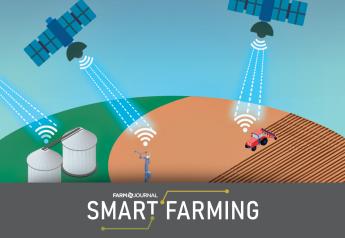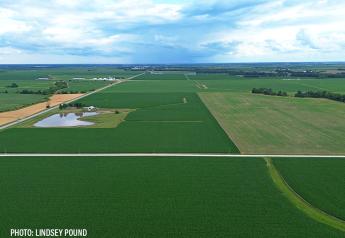Local Field Trials Sell' Farmers On New Products And Practices

The question that farmers are asking retailers about new products these days with increased frequency is no surprise. It’s simply, “What’s my return on investment?” To answer that, Crystal Valley Cooperative is implementing more local versus regional farm-based field trials with its customers across southern Minnesota and northern Iowa, says Duane Schlieman, sales agronomist.
“It’s a move away from simply selling a product to demonstrating it to the farmer at the local level,” says Schlieman, based in Nicollet, Minn. “After the last couple of seasons, I think growers understand we’re truly trying to help them make decisions that are efficient and financially responsible.”
Although Schlieman says what Crystal Valley is doing is “nothing new,” the cooperative has ramped up efforts to add local field trials in the past two years. The reason, he says, is farmers believe results that they see and experience on their own land.
“We can show guys all the data we want, but if they haven’t experienced it, it can be hard for them to see the value,” he says. “They don’t discredit our recommendation. They just say, ‘It won’t work for me.’”
To date, Crystal Valley has implemented trials on precision ag technologies along with agronomics pertaining to plant populations, genetics, starter fertilizers, Y-drop sidedress, herbicides and fungicides.
Course Of Action. The cooperative plans the replicated 10- to 20-acre plots with growers each winter. Creating the plans and layers ahead of planting enables agronomists to quickly separate data in that area, post-harvest, from the rest of the field.
Central Valley does the bulk of the hands-on work and agronomic management, but the farmer typically harvests the plots. “We have a tractor and 12-row planter, and growers often give us the GPS coordinates, and we’ll go in and plant the plot. We can follow through on everything from there except harvest. We don’t have a combine; leastwise, not yet,” he says.
Speedy Feedback. Once harvest is done, Central Valley agronomists crunch the numbers and then share the results with farmers by early December. “We put the results into bushels per acre and also dollars and cents,” Schlieman says.
That quick feedback gives growers time to evaluate the results and make early-purchase decisions before the end of the year if they’d like.
“The turnaround on providing the information is challenging, but it’s been really successful for our business,” Schlieman says.
Beyond the obvious benefits to the farmer, Schlieman says the plots give agronomists a more complete picture of how well products and practices work for growers in a specific geography.
As the cooperative pools information, agronomists then have the opportunity to observe any trends in relation to weather, genetics and drainage, or simply by varying management systems.
Such insights then guide the recommendations the agronomists make. Schlieman notes, “We’re trying to do the right trials and give growers information in a timely manner, so they can make good decisions for their farms.”







